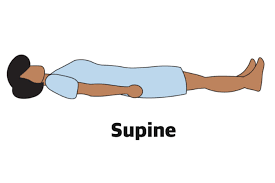Which of the following information should a phlebotomist document during a glucose tolerance test?
Flavor of the glucose solution
Time the glucose load was completed
Amount of water ingested during the procedure
Volume of blood obtained during the procedure
The Correct Answer is B
Choice A reason:
The flavor of the glucose solution is not a relevant factor to document during a glucose tolerance test. The flavor does not affect the test outcome and is not a required piece of information for the test's validity or interpretation.
Choice B reason:
Documenting the time the glucose load was completed is crucial. The glucose tolerance test is time-sensitive, and blood samples are taken at specific intervals after the glucose solution is ingested. Accurate timing ensures that the results are valid and that any changes in blood glucose levels are correctly attributed to the patient's metabolic response to the glucose load.
Choice C reason:
While the amount of water ingested during the procedure may be noted for patient comfort, it is not typically a required piece of documentation. The focus of the glucose tolerance test is on the patient's response to the glucose solution, not on the volume of water consumed.
Choice D reason:
The volume of blood obtained during the procedure is generally standardized based on the test requirements and does not need to be documented each time. The phlebotomist must ensure that enough blood is collected for the analysis, but the exact volume is determined by the collection tubes used, which are designed to draw a specific volume.
Nursing Test Bank
Naxlex Comprehensive Predictor Exams
Related Questions
Correct Answer is A
Explanation
Choice A reason:
Asking another phlebotomist to obtain the specimen is a prudent step after multiple unsuccessful attempts. It can reduce the patient's discomfort and anxiety. A fresh perspective from another professional might increase the chances of a successful draw, especially in challenging situations like small, fragile veins often found in diabetic patients.
Choice B reason:
Performing the draw on a foot is not typically recommended due to the increased risk of infection and complications, especially in diabetic patients who may have reduced sensation and slower healing in their extremities. This option should only be considered when other more proximal sites have been deemed unsuitable.
Choice C reason:
Repeating the draws until successful is not advisable as it can cause undue stress to the patient and increase the risk of hematoma or vein damage. It is essential to minimize the number of attempts to prevent patient discomfort and potential complications.
Choice D reason:
Performing the draw on a leg is another option that is generally avoided unless absolutely necessary, due to similar reasons as drawing from a foot—risk of infection and complications. Additionally, it can be an uncomfortable position for the patient.
Correct Answer is A
Explanation
Choice A Reason:
The supine position, where the patient lies flat on their back with the face upward, is the correct position for initiating CPR. This position allows for proper chest compressions and airway management, which are critical components of CPR.
Choice B Reason:
The Semi-Fowler's position, where the patient is partially sitting up with the head of the bed raised to 30-45 degrees, is not suitable for CPR. This position would make it difficult to perform effective chest compressions.
Choice C Reason:
The prone position, where the patient lies flat on their stomach, is not appropriate for CPR. Chest compressions cannot be effectively delivered in this position, and it would also complicate airway management.
Choice D Reason:
The side-lying position is not appropriate for CPR. While this position can be used for an unconscious patient who is breathing normally to maintain an open airway and prevent aspiration, it is not suitable for CPR, which requires the patient to be on their back.

Whether you are a student looking to ace your exams or a practicing nurse seeking to enhance your expertise , our nursing education contents will empower you with the confidence and competence to make a difference in the lives of patients and become a respected leader in the healthcare field.
Visit Naxlex, invest in your future and unlock endless possibilities with our unparalleled nursing education contents today
Report Wrong Answer on the Current Question
Do you disagree with the answer? If yes, what is your expected answer? Explain.
Kindly be descriptive with the issue you are facing.
